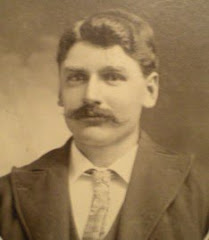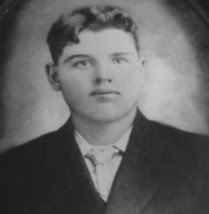Hugh Peacock and Ellen Waggot were married by license in Toronto
on May 16, 1856 [1]. The ceremony was performed by Rev. H. J.
Grassett, B.D. at the Cathedral Church of St. James [2] which was a
Gothic Revival Anglican cathedral opened in 1853 at the corner of King
Street East and Church Street. At the time of their marriage, the spire
which makes it the second highest church in Canada even now, had not
been added; nonetheless, it would have been an auspicious setting for a
young Irish couple’s marriage. In 1843, the Little Trinity Church at
417 King East had been built for the parishioners who could not afford
the ‘lofty pew rents’ at St. James, and that was before the new
Cathedral had been erected following the 1849 fire.
We don’t know where the young couple was living in 1856 or in
September, 1857 when their first child, William was born; however,
when Eliza (born 19 September, 1858) was baptized at the Knox
Presbyterian Church on the 7th of August, 1859, they were living
at Craig’s Cottages, in the West End, which were probably home to
tradesmen. [3] The Knox Presbyterian Church would have been
the structure on Queen Street between Yonge and Bay which was
demolished in 1905 . [4] This was close to their home just west of
Queen and Spadina on Vanauley Street running north from
Queen. At that time, there was no development along Spadina at
Queen. They were still living at 1 Craig’s Cottages when Hugh
advertised his business as a ‘Carter’ in Caverhill’s Toronto City
Directory of 1859-60. [5] These are the only records I found
to date in Toronto.
In later census records, Hugh gives the date of his immigration to
Canada first, as 1849 and then, as 1852. He would have been
between fifteen and eighteen years of age and among the 1.3
million people who emigrated from Ireland between 1841 and
1850. Twenty eight per cent of these people came to Canada
swelling Toronto’s population from 9,254 at its incorporation
in 1834 to 44,821 in 1861.
If he arrived in 1849, he would have seen the fire which destroyed
the city’s centre, and perhaps seen or at least heard about the
1851 sod-turning ceremony at the Provincial Parliament at Front
and Simcoe Streets which marked the beginning of the railway era.
“On May 16, 1853 the first passenger train steamed out of
Toronto from a wooden depot located close to the site of the
eastern entrance of today's Union Station…..(however) the railways
were a mixed blessing………. (eventually) The tracks disfigured the
city and effectively cut Toronto's citizens off from Lake Ontario,
the…. most important recreational and scenic asset. The railway
companies hogged the best real estate in town, swallowing up vast
tracts of prime waterfront land for stations, roadbed, tracks,
buildings, yards and servicing facilities; all of which further
distanced Torontonians from their lakeshore .[6] Perhaps it was
the railway which made a living for a ‘carter’ in Toronto in that
decade, but it might also have been the decade of development
which drove Hugh and his family out.
By January 14, 1861 when the census was taken, Hugh (now
calling himself a carpenter) and his young family, had relocated
to King Township, north west of the city of Toronto.
1 - J. Ross Robertson’s Landmarks of Toronto -A Collection of Historical Sketches
Viewed at Toronto Reference Library – 971.3541R57 1974 Vol. 3 – p.542
(The witnesses to the marriage are not included. The original record should be checked.)
2 - http://www.oldtowntoronto1793.com/pages /Old_Town_Toronto_1793_mem144.aspx
(pictures of St. James)
3 - Ontario Birth Records
4 - http://www.knoxtoronto.org/history/Knox-1848.html-
5- Caverhill’s Directory seen at the Toronto Reference Library at Yonge and Bloor.
6 - http://www.trha.ca/history.html
Sunday, July 20, 2008
Subscribe to:
Post Comments (Atom)











No comments:
Post a Comment